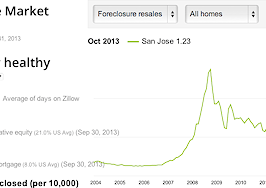A new map-publishing tool introduced by Google could fuel public consumption of neighborhood information by offering an easier way to publish and share granular geographic data online.
Google Maps Gallery, an expansion of Google Maps Engine, lets organizations publish their maps in galleries that are discoverable through major search engines and viewable on Google Earth, “making it seamless for citizens and stakeholders to access diverse mapping data,” Google says.
Marc Davison, founding partner at real estate marketing communications firm 1000watt, noted that the “bigger, deeper, more interesting contextual data for users to peruse for free offers users a much deeper and more entertaining look into the market” than is currently found through map searches on most broker sites.
Publisher pages created by GreatSchools and PolicyMap, both prominent data sources for online real estate search, underscore the tool’s relevance to online real estate search.
GreatSchools’ school ratings reach more than half of U.S. families with school-age children, according to a spokesperson, and already appear on many real estate listing sites, including Zillow and Trulia.
GreatSchool’s Maps Gallery features three maps, including one showing schools across the country represented by the site’s ratings.
PolicyMap, meanwhile, feeds data to Realtor Property Resource (RPR), a national property database owned and operated by the National Association of Realtors (NAR) that lets Realtors access property and market information for more than 160 million properties. In markets where RPR has partnered with MLSs, users can access active and sold listing through RPR.
PolicyMap’s gallery showcases six maps, including one that measures affordability down to the U.S. Census Bureau tract level (geographic units that contain an average of 4,000 people) and another showing the percentage of renting households, also down to the tract level.
The data shown on these maps has already been accessible to the public, but the arrival of a tool that renders individual maps discoverable based on search phrases could get consumers more attuned to hyperlocal characteristics.
The Census Bureau APIs, introduced in 2012, may also ultimately play a role in raising awareness of neighborhood characteristics among consumers. Some real estate sites and apps use them to display granular data all the way down to the Census block level (geographic units that often contain less than 200 people).
A question with even greater implications for real estate, Davison said, is, “What if Google got their hands on the same depth of data RPR has?”







